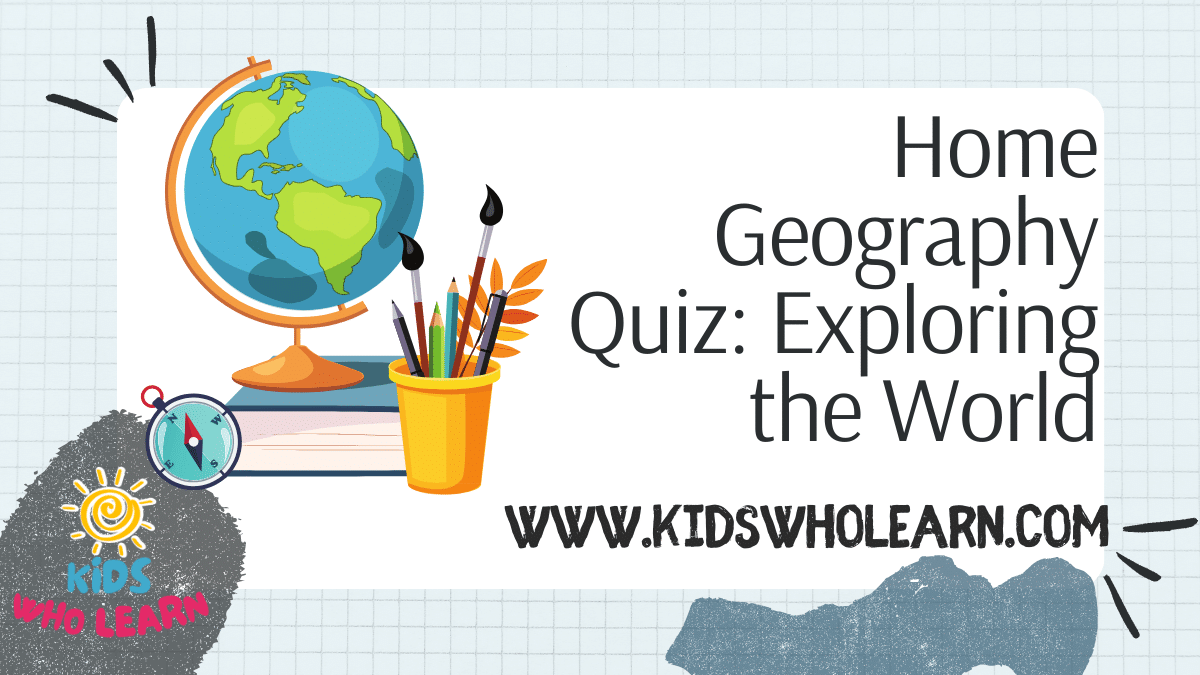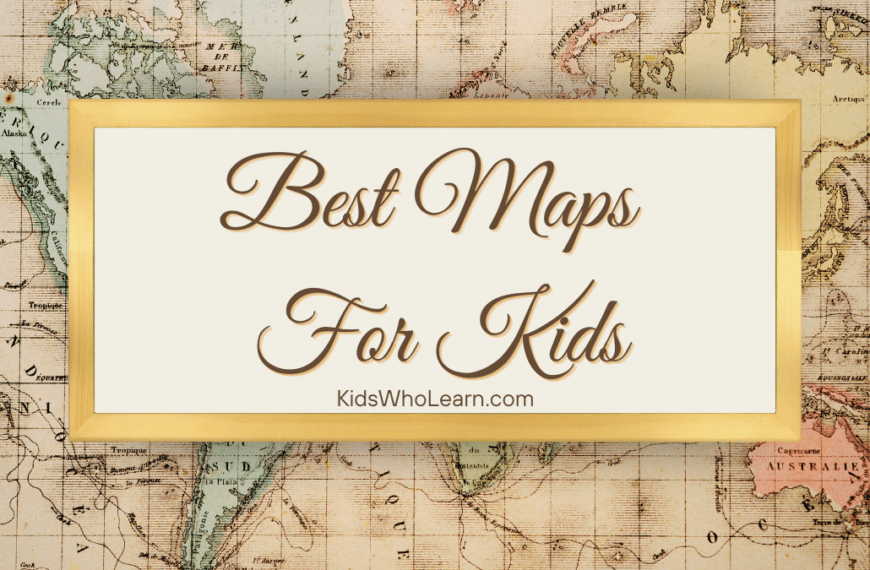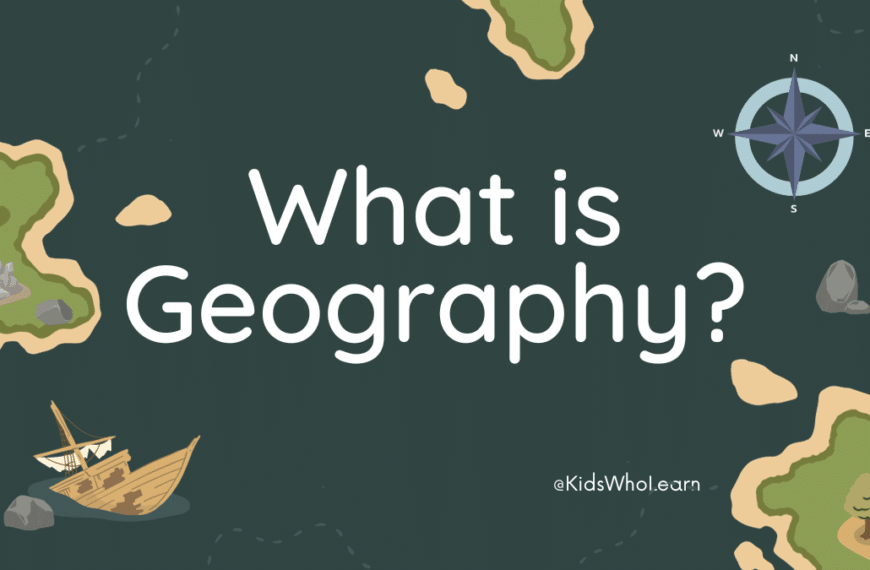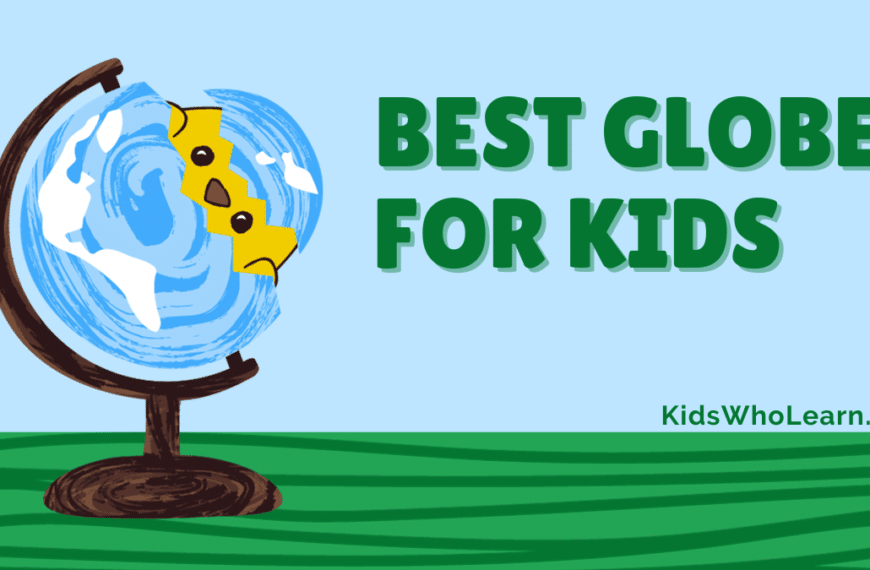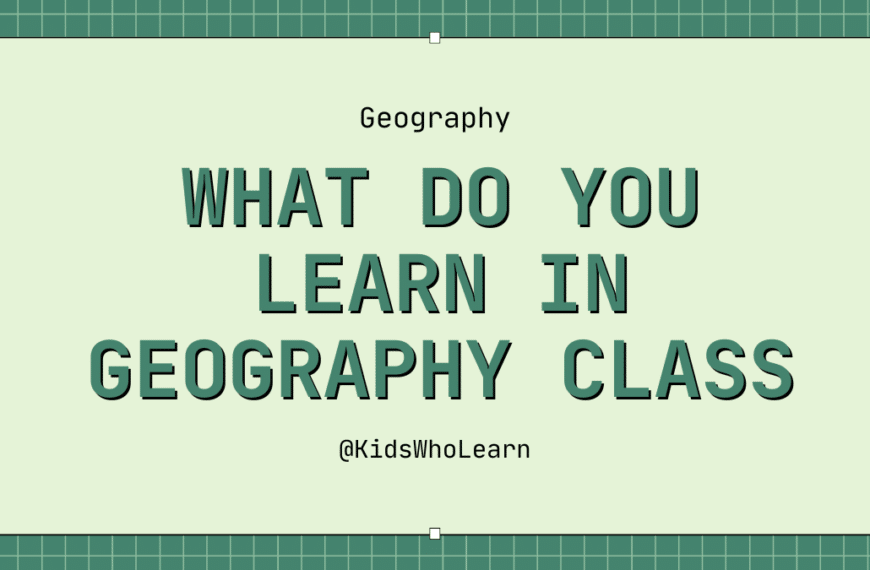Geography quizzes offer an engaging way to learn about the world. With the vast array of landscapes, countries, and cultures that make up our planet, there’s always something new to discover. Quizzes provide a dynamic platform to test your knowledge and challenge your friends, helping you to learn about the complexities of physical geography, the nuances of cultural regions, and the advancements in the way we study our world through digital innovation.
Taking a home geography quiz encourages you to explore and engage with various geographical concepts. From the comfort of your home, you can embark on a journey across continents, delve into the specifics of different countries, and visualize the physical features that shape our environment. Whether you’re a novice with a budding interest in the world or someone with a deeper understanding looking to expand your knowledge base, these quizzes cater to all levels of expertise.
Key Takeaways
- Geography quizzes are a fun and educational way to deepen your understanding of the world.
- Personalized quiz content allows for a tailored learning experience.
- Visual and digital tools enhance engagement with geographic learning.
Basics of Geography
Geography is the study of places, the relationships between people and their environments, and the physical and human characteristics of the Earth. You’ll learn how countries and states form the tapestry of the planet’s surface, and how understanding the Earth is essential to grasping geographic concepts.
Understanding the Earth
The Earth is a complex planet with diverse physical features. There are seven continents: Asia, Africa, North America, South America, Antarctica, Europe, and Australia. Recognize these key characteristics:
- Shape: The Earth is a sphere, though slightly flattened at the poles (an oblate spheroid).
- Layers: It is composed of layers, including the crust, mantle, and core.
- Plate Tectonics: The crust consists of tectonic plates that move and cause natural phenomena like earthquakes and volcanic eruptions.
Understanding Earth’s physical characteristics helps you make sense of the geographical diversity you’ll encounter in different parts of the world.
Countries and States
The political divisions of the Earth include countries and states. As of your current date, there are 195 countries recognized by the United Nations, which includes 193 member states and 2 observer states:
| Continent | Example Countries |
|---|---|
| Africa | Egypt, Kenya |
| Asia | China, India |
| Europe | France, Germany |
| North America | USA, Canada |
| South America | Brazil, Argentina |
| Oceania | Australia, New Zealand |
| Antarctica | N/A (no countries, but various territorial claims) |
Within countries, further subdivisions known as states (or provinces, regions, etc.) help manage governance. For instance, the USA has 50 states, each with its own local government, while India has 28 states and 8 union territories. Recognizing these political boundaries is essential for understanding the administrative organization of different countries.
Diving Into Continents
In this journey across continents, you’ll uncover the geographical tapestry that makes each world region unique. From the vast savannas of Africa to the diverse ecosystems of Australia, each continent reveals its own set of countries, cultures, and landscapes.
Exploring Africa
Africa, the second-largest continent, offers an incredible array of ecosystems. You’ll find the Sahara Desert in the north, and the fertile plains of the Serengeti in the east. Notable geographical landmarks include:
- Mount Kilimanjaro: Africa’s highest peak, located in Tanzania
- Nile River: The world’s longest river, flowing through Egypt, Sudan, and more
European Countries
Europe might be relatively small, but it’s densely packed with countries steeped in history and natural beauty. It hosts a number of significant rivers such as the Danube and towering mountain ranges like the Alps. Important to note are:
- France: Home to the iconic Eiffel Tower and the sprawling Louvre Museum
- Germany: Known for the Black Forest and its pivotal role in European history
Asian Insights
Asia, the largest and most populous continent, has landscapes ranging from the Himalayan Mountains to the Gobi Desert. You’ll encounter rich cultures and ancient traditions here. Key highlights include:
- Great Wall of China: A historic fortification stretching thousands of kilometers
- Mount Everest: Earth’s highest mountain peak, located on the border of Nepal and Tibet
North American Regions
North America boasts a wide range of climate zones and topographies, from the Canadian Tundra to the tropical Caribbean islands. Notable regions include:
- Grand Canyon: A world-renowned natural wonder found in the United States
- Rocky Mountains: A major mountain range stretching from Canada to New Mexico
South American Highlights
South America is known for the Amazon Rainforest and its rich biodiversity, as well as the Andes Mountains, the world’s longest continental mountain range. When discussing this continent, one must mention:
- Machu Picchu: An ancient Inca city high in the Andes of Peru
- Amazon River: One of the largest rivers in the world by discharge volume of water
Investigating Australia
Australia, the smallest continent and one of the largest countries, is famously known for its Great Barrier Reef and vast Outback. It’s essential to explore:
- Sydney Opera House: An iconic architectural masterpiece in Sydney
- Uluru: An immense sandstone monolith with great cultural significance
Expanding Your Knowledge
In this section, you’ll gain a comprehensive understanding of world geography and the countries that compose our planet. You’ll become versed in essential geographic concepts and obtain a clear overview of nations worldwide.
World Geography Essentials
Latitude and Longitude: These are the two key coordinates that will help you pinpoint any location on Earth. Latitude lines run horizontally around the globe and are used to measure distances north or south of the Equator. Longitude lines run from pole to pole and measure distances east or west of the Prime Meridian.
Continent Understanding:
- Asia: The world’s largest continent, both by size and population.
- Africa: Known for its diverse ecosystems, it is the second-largest continent.
- North America: Home to a mixture of dense cities and vast natural landscapes.
- South America: Features the Amazon Rainforest and Andes mountains.
- Antarctica: The least populated continent, covered mostly in ice.
- Europe: Rich in history and culture, connected to Asia.
- Australia: The smallest continent and a unique biodiversity hotspot.
Earth’s Physical Features:
- Mountains: Bold as the Himalayas, which include Mount Everest.
- Rivers: Long as the Nile and the mighty Amazon.
- Deserts: Expansive as the Sahara and isolated like the Gobi.
Countries of the World Overview
Country Facts:
A table to summarize key facts about several countries across different continents:
| Country | Capital | Continent | Notable Feature |
|---|---|---|---|
| China | Beijing | Asia | Great Wall of China |
| Egypt | Cairo | Africa | Pyramids of Giza |
| United States | Washington D.C. | North America | Grand Canyon |
| Brazil | Brasília | South America | Christ the Redeemer Statue |
| United Kingdom | London | Europe | Big Ben |
Cultural Significance: Understand every country has its own unique culture, including languages, cuisine, and traditions that contribute to the world’s rich tapestry. For instance, Italy is renowned for its influence on art, architecture, and culinary traditions, while Japan is known for its technological advancements and historical heritage.
Economic Indicators: Consider the role of powerful economies, like the United States, Germany, and China, and emerging markets, such as India and Brazil. Their global economic contributions shape trade, politics, and even geography through urbanization and industrialization.
By internalizing these geographic concepts and country-specific facts, you’ll expand your knowledge and develop a keen understanding of the world’s layout and its diverse cultures.
Advanced Geographical Features
In this section, you will hone your understanding of the world’s geographical intricacies, from the bustling capital cities to the vast stretches of water that define our continents.
Globetrotting Through Capitals
Capitals are not just political centers but also cultural and historical hotspots. For instance, you should know that Moscow, the capital of Russia, is not only the country’s largest city but also a gateway to the vast nation that borders 14 countries. Tokyo, on the other hand, is the capital and largest city of Japan, lying on the Pacific Ring of Fire, renowned not just for its modernity but also for its historical significance.
Spotlight on Significant Bodies of Water
Understanding bodies of water is crucial for geographical literacy. The Pacific Ocean, the world’s largest and deepest oceanic division, touches the shores of numerous countries and impacts global weather patterns. Within this vast ocean lies the Mariana Trench, the deepest known part of the world’s oceans. On a smaller scale, Lake Baikal in Siberia, Russia, is not only the world’s deepest and oldest freshwater lake but also home to a unique biodiversity, which includes the Baikal seal.
Exclusive Focus on Countries Bordering Russia
The vast Russian territory covers much of Eastern Europe and northern Asia, bordering a variety of countries, each with its own geographical features. You need to be aware of countries like Norway and Finland in the northwest, with their extensive coastlines and boreal forests, contrasting with the southern neighbors such as China with its diverse landscapes that range from forest steppes to the Gobi desert – all having the formidable Russian frontier in common.
Cultural Geography
Cultural geography encompasses the study of cultures, languages, and flags that mark identities around the globe. As you explore this quiz, you’ll encounter a variety of elements that define national and regional character.
Languages and Flags
Languages are a cornerstone of cultural geography, serving as the voice of a people’s identity and history. For example, Mandarin Chinese represents the most widely spoken language on Earth, primarily used in China, which proudly flies a red flag with a large star flanked by a semicircle of four smaller stars. Alternatively, English, stemming from the British Isles, has become a global lingua franca and is represented by the Union Jack, a flag with a distinctive design featuring a mix of crosses symbolizing the union of different countries of the United Kingdom.
In your quizzes, you can expect questions like:
- Matching flags to their corresponding countries.
- Identifying official languages spoken in various regions.
Flags often incorporate symbols and colors that reflect a country’s heritage or natural features. Japan’s flag, for instance, is a simple yet profound symbol with a red circle representing the sun against a white background.
Cultural Landmarks
Cultural landmarks provide a tangible representation of a region’s history and identity. The Eiffel Tower in France, for instance, is an iconic iron lattice structure that instantly reminds you of Paris, symbolizing French architectural ingenuity.
Another notable cultural landmark is the Great Wall of China, an ancient fortification built to protect Chinese states against invasions, stretching vast distances and symbolizing the prominence of Chinese civilization.
When faced with questions about cultural landmarks in your geography quiz, you’re not only recalling the site but also the society and historical context it represents.
Innovative Geography Learning
In the quest to learn about the world, you might find traditional methods rather taxing. However, contemporary geography learning techniques, particularly geography games and interactive quizzes, have revolutionized the way you can grasp geographical concepts and facts.
Geography Games
Through geography games, such as the popular map-based GeoGuessr, you have the opportunity to virtually explore the world. These games typically offer various game modes—from timed challenges to exploration without constraints. For instance, Seterra presents:
- List Games: You get a list of places to find on a map within a certain time.
- Multiple Choice Questions: Choose the correct location from a set of options.
Such geography games are designed to be engaging and educational, sharpening your skills in recognizing physical environments and geopolitical boundaries.
Interactive Quizzes
Interactive quizzes, on the other hand, test your knowledge in a more structured manner. Websites like Sporcle and JetPunk offer quizzes that cover:
| Quiz Category | Examples |
|---|---|
| Countries | Identify countries on a blank map. |
| Capitals | Match capitals to their respective countries. |
| Flags | Recognize the flag associated with a country or territory. |
When engaging with these quizzes, you receive instant feedback on your answers, allowing you to learn and remember more effectively. These dynamically designed quizzes adjust the difficulty level based on your previous responses, which helps in building a tailored learning experience.
Geography on Digital Platforms
Exploring geography has become more interactive and accessible thanks to digital platforms. You can engage with geography-related content anywhere, any time, using various apps and online resources.
Mobile Geography Apps
iOS and Android devices are remarkable tools for learning geography. Discover apps like Seterra, which offers geography quizzes that cover countries, capitals, flags, and physical features worldwide. On iOS:
- Seterra Geography (Free with in-app purchases)
- Over 300 different quizzes
- Customizable quiz creation
For Android users:
- World Geography – Quiz Game (Free with in-app purchases)
- Multiple choice quizzes
- Information on over 200 countries
Online Geography Resources
Beyond mobile apps, numerous websites provide substantial geography materials for learners of all ages. Notable resources include:
- National Geographic website
- Rich articles
- Stunning photography
- Interactive maps
- Google Earth (Free)
- Explore satellite imagery of Earth’s surface
- Virtual tours of different locations
These digital tools make geography come alive, allowing you to explore the world without leaving your home.
Engaging with Geography
Geography unlocks a treasure trove of knowledge and entertainment. It can be used to enhance education and provide enjoyment through different forms of playful learning.
Geography for Educational Purposes
Geography is an essential component of your educational journey. It helps you understand the world around you, from the distribution of ecosystems to the intricate patterns of human settlement. In schools, actionable methods to drive this understanding include:
- Interactive Maps: Utilize digital or paper maps to identify countries, states, and cities, facilitating a hands-on learning experience.
- Geo Quizzes: Regularly engaging in quizzes that challenge your knowledge of capitals, flags, and important landmarks can reinforce learning.
- Cultural Exchange: Exchange programs or projects with students from different parts of the world can bring geography lessons to life, making the study of diverse cultures, languages, and traditions more relatable.
For students and educators alike, incorporating geographical tools and exercises into the curriculum builds a strong foundation for understanding global dynamics.
Fun with Geography
Engaging with geography doesn’t have to be formal or just for kids. It offers countless avenues for amusement and camaraderie among friends. Here are a few ways to make geography fun:
- Board Games: Games like Risk or Ticket to Ride combine strategy and geographical knowledge, providing hours of entertainment.
- Geocaching: This outdoor recreational activity involves using GPS devices to hide and seek containers, called “geocaches,” at specific locations marked by coordinates all over the world.
- Travel Planning: Transform your next vacation plan into a geographical expedition. Research destinations, plot routes on a map, and learn about different regions, which can be both fun and enlightening.
Inviting geography into your leisure time can spark new interests and inspire you to explore the world, both intellectually and physically.
Exploratory Activities
Engage in hands-on exploration of the world with these activities designed to sharpen your geographic skills and cultural knowledge.
Identifying Global Locations
To effectively identify global locations, you’ll start with a world map. Use the following steps to locate countries, cities, and physical features:
- Begin with continents: Determine the continent of the location you’re exploring.
- Move on to countries: Identify the country within that continent.
- Drill down to cities or landmarks: Pinpoint specific cities or major geographical features such as rivers and mountains.
Practice by pinpointing the following:
- Amazon Rainforest: (Continent: South America | Country: Primarily Brazil)
- Mount Everest: (Continent: Asia | Country: Border of Nepal and China)
- The Pyramids of Giza: (Continent: Africa | Country: Egypt)
Geography Events and Holidays
Become familiar with notable geography-related events and holidays to enrich your understanding of cultural and physical landscapes.
- Earth Day (April 22): An annual event to demonstrate support for environmental protection. You can participate in local clean-ups or educational programs.
- World Geography Day (November): Celebrate by joining geography quizzes or exhibitions that explore various aspects of world geography.
- National Park Weeks: Many countries have designated weeks where you can explore national parks for free. Check the events calendar of your country to plan visits during these times.
Geographical Content Customization
In the realm of geography education, leveraging customized content can enhance your learning experience, ensuring the quizzes and games are aligned with your specific interests and knowledge level.
Creating Bespoke Geography Quizzes
To create custom geography quizzes that cater to your learning needs, follow these steps:
- Identify the Scope: Choose topics such as continents, countries, capitals, or landforms. Ensure the scope aligns with your learning goals.
- Select Difficulty Levels: Adjust the complexity of questions from basic to advanced to match your proficiency.
- Customize Question Types:
- Multiple Choice: Offer varied difficulty with distractors.
- True/False: Test your fact-recall ability.
- Short Answer: Cater to your descriptive knowledge.
- Feedback Mechanism: Utilize instant feedback for each question to foster your learning process.
Tailoring Geography Games to Users
For engaging geography games that are tailored to your preferences:
- Topic Selection: Choose games focused on specific geographical areas or themes such as ‘African Countries’ safari or ‘Rivers of the World’ adventure.
- Difficulty Customization: Select games that adapt to your progress, increasing in difficulty as your knowledge grows.
- Interactive Elements: Participate in games with interactive maps and timed challenges to enhance retention and motivate continuous learning.
- Progress Tracking: Look for features that allow you to track your learning journey, providing insights into areas of strength and those needing improvement.
Visual Geography
Understanding geography visually can greatly enhance your grasp of world structures and relationships. Begin with a world map; it’s the cornerstone of visual geography. Observe the position of continents, noting their shape and proximity to one another. Maps also indicate political boundaries, enabling you to recognize the countries of Europe or the U.S. states.
Images play a pivotal role in visual learning. Look at landscape photographs to appreciate the physical geography of a region. Closely inspect visual representations to understand topography, climate zones, and natural features.
Here’s a quick guide to familiarize you with visual elements:
- World Maps: Identify countries, continents, oceans, and notable geographic landmarks.
- U.S. States: Learn the location, shape, and capital cities through outlined maps.
- Europe: Study the layout of European countries using a map, focusing on each nation’s size and bordering countries.
Flags introduce you to a country’s identity. Pay attention to the colors, symbols, and patterns as they often have historical significance and represent national values.
| Continent | Characteristic |
|---|---|
| Asia | Largest, diverse countries |
| Europe | Cluster of small nations |
| Africa | Diverse landscapes and climates |
Take advantage of the plethora of available resources such as atlases and online interactive maps to enhance your visual geographic knowledge. Remember that a keen eye for detail and regular review will solidify your understanding of the world’s geography.
Country-Specific Sections
In this section, you’ll discover the unique geographical characteristics that define each of these intriguing nations.
The Mystique of Egypt
Egypt’s geography is dominated by the Nile River, which is the lifeblood of the country. Ancient civilizations flourished along its banks, leaving behind a rich tapestry of historical sites.
Iceland’s Unique Geography
Iceland boasts dynamic landscapes, with active volcanoes, geysers, and glacial rivers. Your exploration will reveal how these natural features shape Icelandic culture and daily life.
Australia’s Diverse Environments
From the arid Outback to the vibrant Great Barrier Reef, Australia’s geography is incredibly diverse. You’ll learn about ecosystems that range from desert to rainforest.
Japan’s Geography Uncovered
Japan’s geography impacts its development, with mountainous terrain influencing cities to expand vertically. Its island nature dictates a strong connection to the sea for food and trade.
Russia’s Vast Terrain
Russia, the world’s largest country by land area, offers a variety of geographical zones. Siberia’s taiga forests and the tundra are key features you’ll come across.
Discovering Spain
Spain’s geography includes everything from Mediterranean beaches to mountainous regions like the Pyrenees. You’ll explore how these landscapes affect Spain’s climate and cultures.
Canada’s Geographic Expanse
Canada is known for its vast wilderness and varied climates, from the Arctic tundra in the north to the temperate rainforests of the west coast. You’ll examine how geography influences resource industries.
Exploring the United States
The United States, with its national parks and major rivers such as the Mississippi, showcases a broad spectrum of geographic features. Learn how this diversity impacts the economy and societal structure.
Frequently Asked Questions
Exploring the world through quizzes can significantly enhance your geographical knowledge and offer a fun learning experience for all ages. Here we address common inquiries about geography quizzes and games.
What are some interactive geography games suitable for children?
Interactive geography games designed for children include “Stack the States,” “GeoGuessr,” and “Seterra Geography.” Each offers a unique and engaging approach to learning about the world’s countries, cities, and landscapes.
Can you recommend any geography quiz games that allow for multiplayer competition?
Try “World Geography Games” or “Geography Quiz Game 3D,” as both provide options for multiplayer challenges. These platforms encourage competitive learning and can be accessed online or through mobile apps.
How can one improve their knowledge of global geography through quizzes?
Use quizzes like “JetPunk,” “Lizard Point,” and “Sporcle” which offer a variety of global geography categories. Regular participation and exploration of different regions help improve your retention and understanding of geographical facts.
What are the best online tools or games for learning European geographical boundaries?
The online tools “Sheppard Software” and “Toporopa” provide educational games focused on European geographical boundaries. These tools offer an interactive way to memorize countries, capitals, and physical features.
Which platforms offer quizzes on African geography, including country locations and map recognition?
Platforms such as “FunTrivia” and “Africa Geography Quiz Game” are specialized in African geography. They help you familiarize yourself with country locations and their map recognition with structured quizzes and interactive maps.
Where can one find a comprehensive quiz covering all the countries of the world?
Comprehensive global geography quizzes are available on websites like “Sporcle’s World Countries Quiz” and “QuizUp.” These offer a full roster of country-specific questions and can be an excellent test of your global knowledge.

